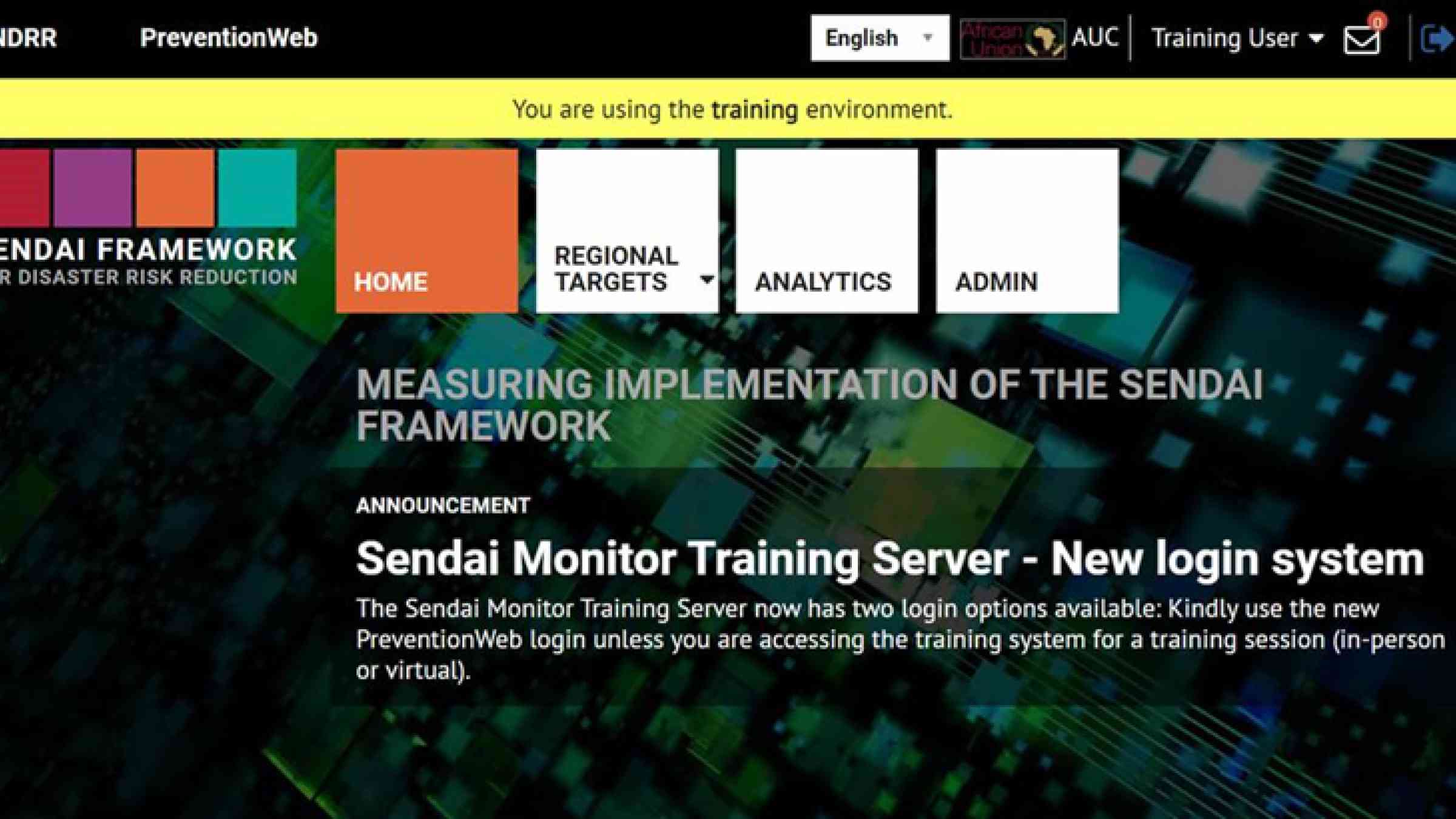New regional module for the Sendai Framework Monitor launched to accelerate DRR reporting in Africa

On 29 July 2021, the UN Office for Disaster Risk Reduction (UNDRR) Regional Office for Africa and the African Union Commission (AUC) co-hosted the Sendai Framework Monitor (SFM) Regional Module orientation to introduce a new feature in the SFM. SFM focal points from 35 Member States in Africa and representatives from Regional Economic Communities (RECs) participated in the virtual launch. This new module will allow regional inter-governmental organizations and Member States to monitor progress against regional DRR frameworks and to showcase their success in DRR. This feature was also developed to avoid duplication of reporting by providing Member States with a single space where they can monitor and report on their DRR progress at national, regional, and global levels. In Africa, the application of this feature will also contribute to RECs and Member States’ efforts to report on the five additional targets set in the Programme of Action for the Implementation of the Sendai Framework in Africa (PoA) under the leadership of AUC.
During the meeting, Mr. Kai Gatkuoth, Technical Coordinator for Disaster Risk Reduction at the AUC, expressed his appreciation of this new feature in the SFM and encouraged Member States to increase reporting. Participating focal points also expressed their support for the SFM regional module and hoped that it would streamline the reporting process.
“UNDRR in coordination with the AUC and RECs is pleased to closely work with our DRR focal points and to support them to overcome the challenges that the reporting process may present, particularly in these challenging circumstances we are facing. It is a long-term process, and we would like to acknowledge the efforts of the national coordinators who are working to increase the availability of data”, said Mr. Amjad Abbashar, Chief of the UNDRR Regional Office for Africa.
This SFM orientation was organized as part of the “SFM Support Days in Africa” which aims to provide regular support to SFM focal points and to foster a community of practice around the Sendai Framework monitoring and reporting process on the continent.
Background Information:
The Sendai Framework Monitor (SFM), launched in March 2018, serves as an online platform that allows UN Member States to systematically report on their disaster losses. The SFM is one of the cornerstones of the Sendai Framework for Disaster Risk Reduction. A set of indicators, recommended by an Open-ended Intergovernmental Expert Working Group, tracks progress in implementing the seven targets of the Sendai Framework as well as its related dimensions reflected in the Sustainable Development Goals 1, 11, and 13.
The SFM also functions as a management tool to help countries develop DRR strategies, make risk-informed policy decisions, and allocate resources to prevent new disaster risks. In Africa, SFM also supports the elaboration of the Programme of Action for the Implementation of the Sendai Framework, with five of its additional targets[1].
[1]The five additional targets are: 1) substantially increase the number of countries with DRR in their educational systems at all levels, as both stand-alone curriculum and integrated into different curricula; 2) Increase integration of DRR in regional and national sustainable development, and climate change adaptation frameworks, mechanisms, and processes; 3) Substantially expand the scope and increase the number of sources for domestic financing in DRR; 4) increase the number of countries with, and periodically testing, risk-informed preparedness plans, and, response, and post-disaster recovery and reconstruction mechanisms; 5) substantially increase the number of regional networks or partnerships for knowledge management and capacity development, including specialized regional centers and networks.